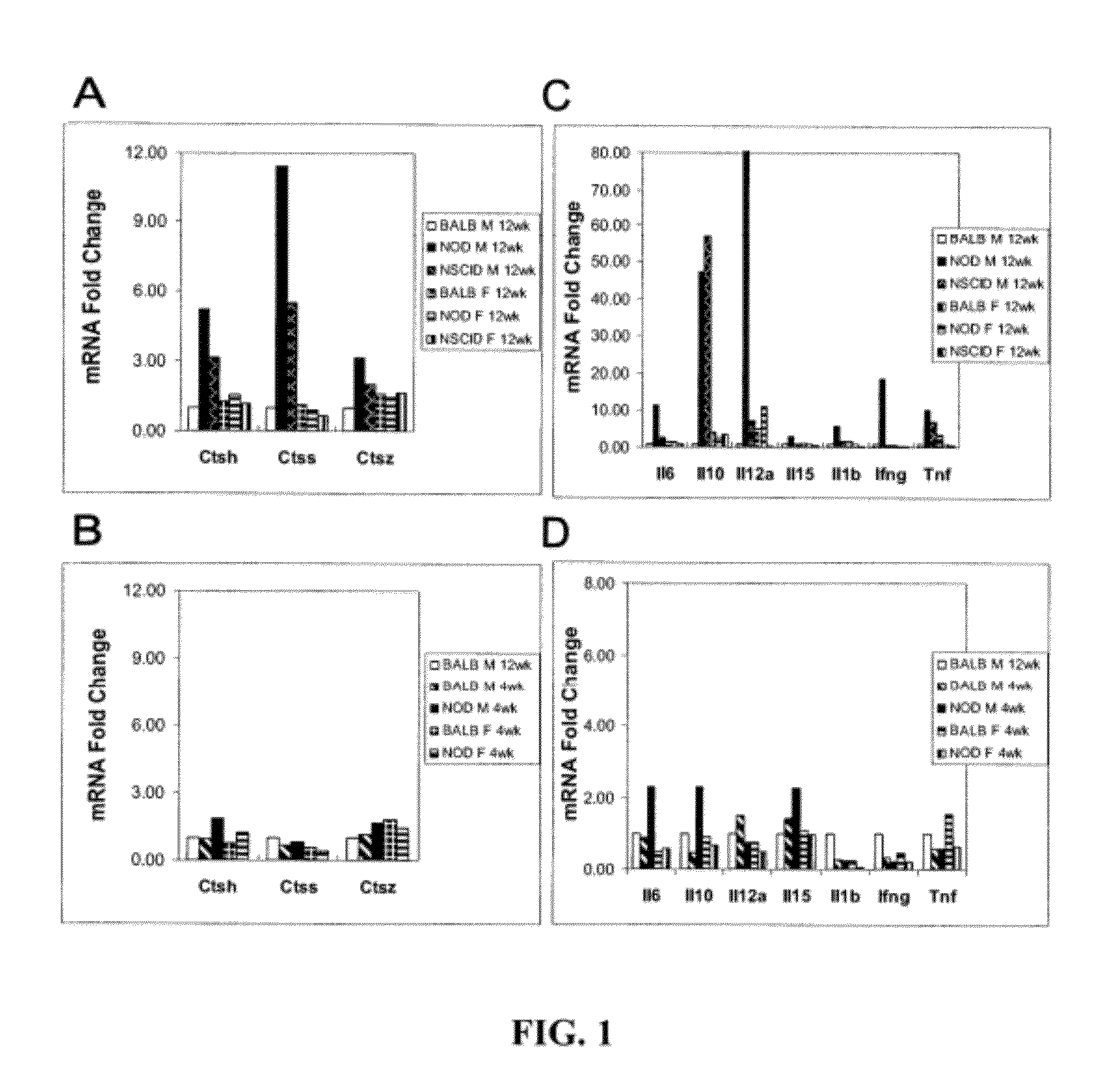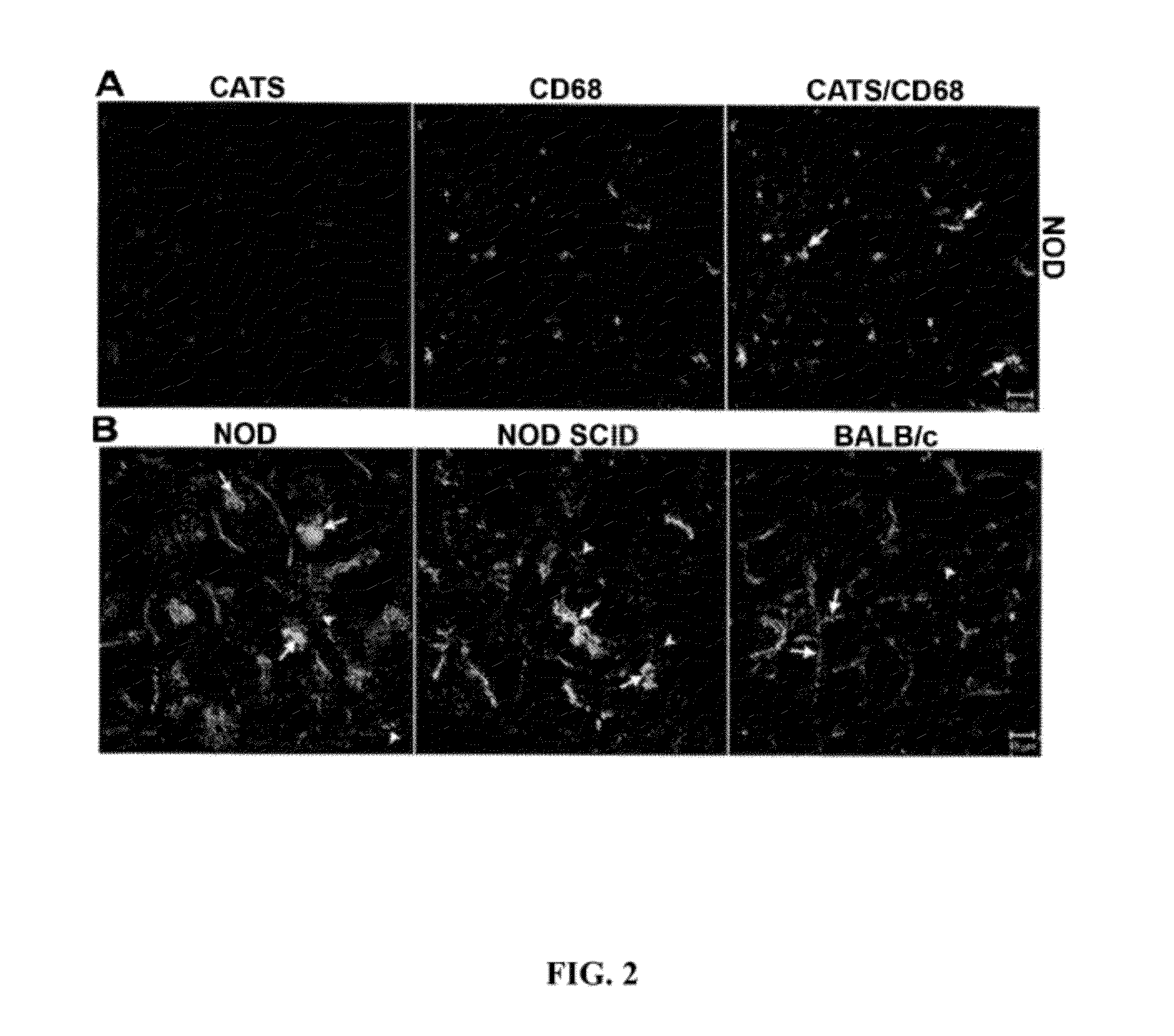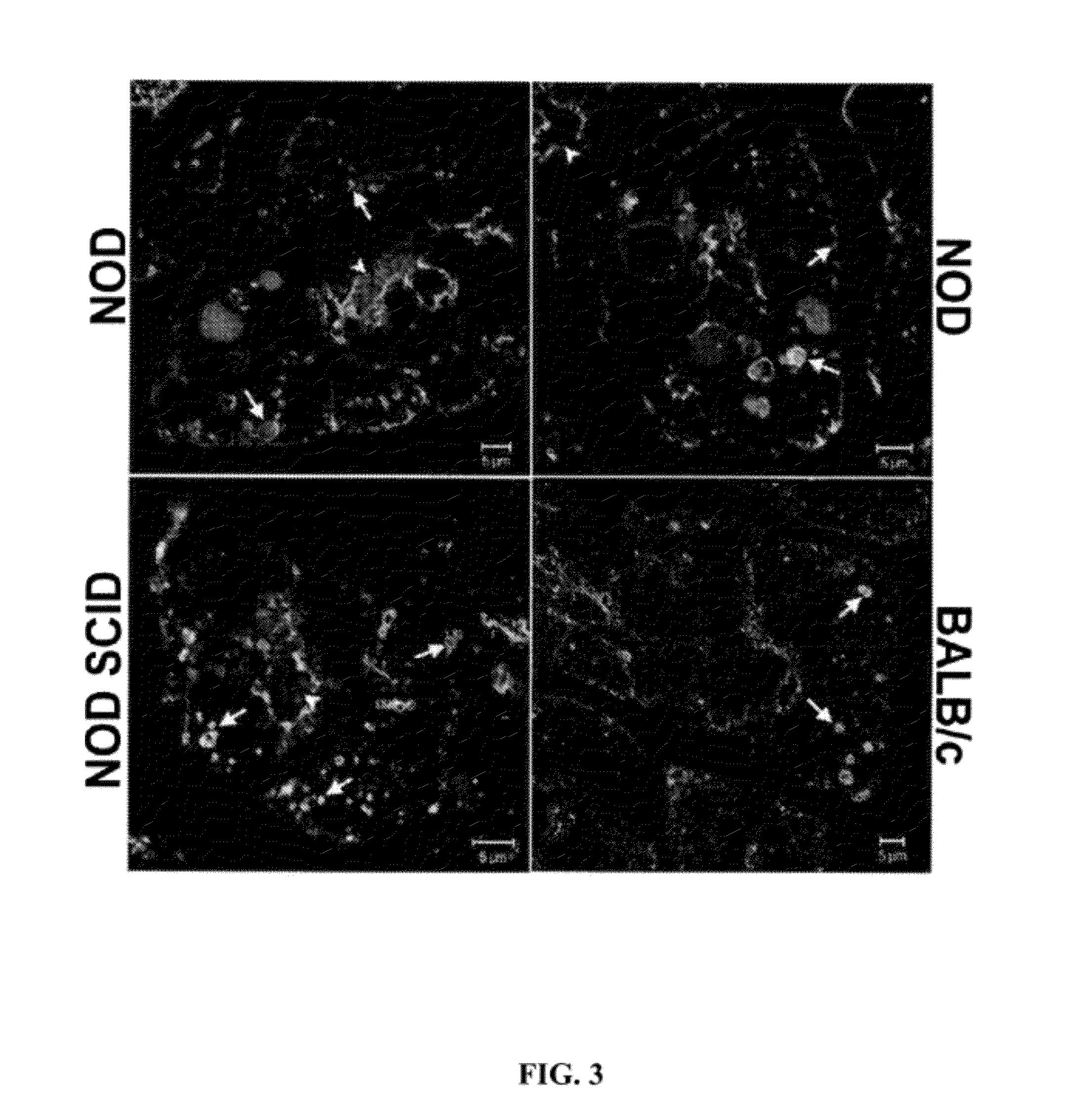Biomarkers for the early detection of autoimmune diseases
a biomarker and autoimmune disease technology, applied in the field of diagnosis of autoimmune diseases, can solve the problems of sensitivity of detection and stability, unrecognized mechanisms of autoimmune diseases, and limited treatment options
- Summary
- Abstract
- Description
- Claims
- Application Information
AI Technical Summary
Benefits of technology
Problems solved by technology
Method used
Image
Examples
descriptive embodiments
[0100]It has been discovered herein that the expression level of activity certain peptides are altered in tears in patients having an autoimmune disease. The altered expression level or activity of these polypeptides then can be used as biomarker for diagnosis or prediction of autoimmune diseases, methods of restoring the expression level or activity, therefore, can be used to treat the autoimmune disease.
[0101]Thus, the invention, in one aspect, provides diagnostic methods, which are based, at least in part, on determination of the expression or activity levels of a polypeptide selected from the group Ctss, Ctsh, Ctsr, Ctsw, Ctsz, Ifng, Il6ra, Il10, Il10ra, Il15, Tnfa, Apo-F, Lcn-2, lactoperoxidase, lactoferrin or lysozyme. In one aspect at least one polypeptide expression level is determined, in another at least two, or alternatively at least three, or alternatively at least 4, or alternatively at least 5, or alternatively at least 6, or alternatively at least 7, or alternatively ...
experiment 1
[0149]The male NOD mouse is a well-established animal model in which to evaluate the processes of dacryoadenitis and sialoadenitis characteristic of the human disease. This mouse strain spontaneously develops insulin-dependent diabetes mellitus (IDDM) as well as SjS-like disease. Dacryoadenitis, which is more severe than sialoadenitis in this mouse model, is fully-manifested by 12-16 weeks. The manifestations and pathological characteristics of the affected LG in the NOD mouse resemble those changes seen in LG of patients suffering from dacryoadenitis of Sjögren's syndrome. The NOD SCID mouse strain is an immune-incompetent NOD mouse. Prkdc congenic strain can be compared to the NOD mouse to distinguish events associated with inflammation versus events characteristic of the strain that are independent of T- and B-cell mediated inflammatory responses. The NOD SCID strain lacks functional T, B and NK cells, and is free of exocrine tissue destruction.
[0150]The early pathological events...
experiment 2
[0189]SjS biomarkers in tears are correlated with the severity of inflammatory autoimmune lacrimal gland disease. Applicants can utilize three unique tear biomarkers for SjS, CtsS, Apo-F and Lcn-2, that can be expressed in tears at levels proportional to the extent of inflammatory autoimmune LG disease manifested in the source of the tears. In mouse and human tears, levels of these three biomarkers are quantified, and submitted to be increased in disease, in parallel with three tear secretory proteins, lactoferrin, lactoperoxidase and lysozyme, submitted to be generally decreased in SjS as well as other KCS disorders.
[0190]The NOD mouse and the IL1-injected BALB / c mouse represent two models of inflammatory autoimmune LG disease. Tears and ocular tissue samples are collected from these models at intervals relevant to disease development and progression. In parallel, the extent of inflammatory autoimmune LG disease is quantified by analysis of cornea, conjunctiva and LG. All biomarker...
PUM
| Property | Measurement | Unit |
|---|---|---|
| thick | aaaaa | aaaaa |
| thick | aaaaa | aaaaa |
| volumes | aaaaa | aaaaa |
Abstract
Description
Claims
Application Information
 Login to View More
Login to View More - R&D
- Intellectual Property
- Life Sciences
- Materials
- Tech Scout
- Unparalleled Data Quality
- Higher Quality Content
- 60% Fewer Hallucinations
Browse by: Latest US Patents, China's latest patents, Technical Efficacy Thesaurus, Application Domain, Technology Topic, Popular Technical Reports.
© 2025 PatSnap. All rights reserved.Legal|Privacy policy|Modern Slavery Act Transparency Statement|Sitemap|About US| Contact US: help@patsnap.com



